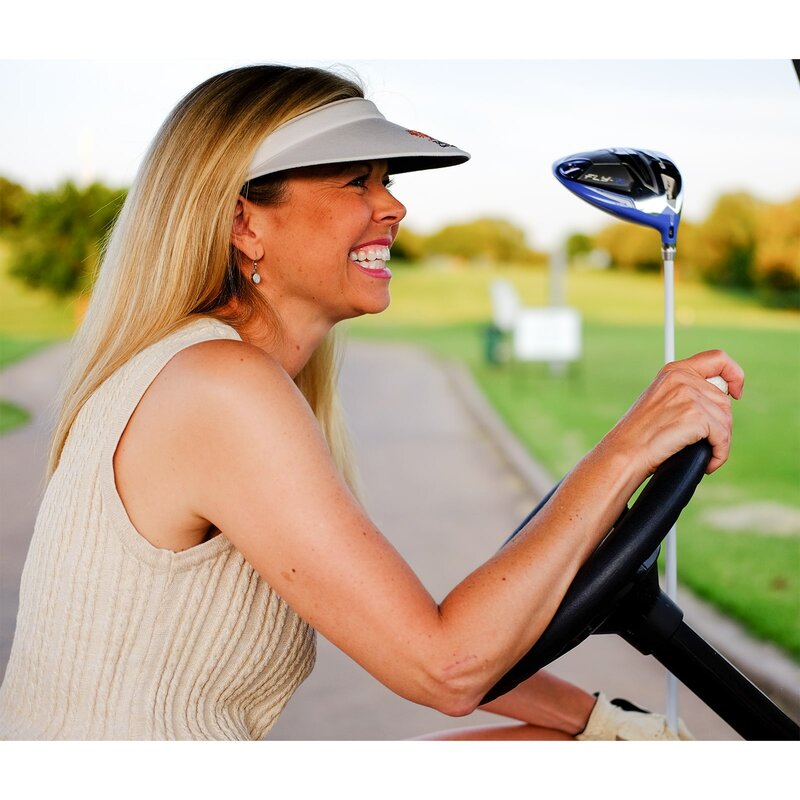
Terapia con microinfusore
“Continua l’impegno di Medtronic nell’offrire soluzioni tecnologiche a supporto delle persone con diabete”
Heather- Utilizzatrice di un microinfusore Medtronic

In cosa consiste la terapia con microinfusore?
Un microinfusore è un dispositivo di piccole dimensioni (all'incirca come uno smartphone) che simula alcune funzioni di un pancreas sano. È discreto e affidabile. Può essere collegato alle stesse zone del corpo in cui attualmente vengono eseguite le iniezioni; l'insulina viene somministrata all'organismo tramite un tubo sottile.
Il microinfusore, erogando insulina ad azione rapida continuamente, 24 ore su 24, sostituisce il bisogno di effettuare frequenti iniezioni di insulina.

Per chi è indicata la terapia con Microinfusore?
Chiedi informazioni sulla terapia con microinfusore al tuo medico diabetologo se:
- Soffri di diabete di tipo 1 o 2
- Ti sottoponi ad almeno tre iniezioni di insulina al giorno
- Assumi altri farmaci oltre all'insulina per gestire il diabete
- Vorresti gestire meglio il diabete
Un microinfusore per il diabete eroga automaticamente piccole quantità di insulina, aiutandoti nella gestione del diabete ma ne sei tu il responsabile. In alcune circostanze, può richiedere interazione da parte dell’utilizzatore.
Componenti del sistema
Terapia con microinfusore possibili benefici
I livelli glicemici possono essere influenzati da molti fattori (quali alimentazione, attività fisica e livelli di stress). L’utilizzo di un microinfusore, associato ad un monitoraggio continuo del glucosio può aiutare a mantenere i tuoi livelli di glucosio in un intervallo
I livelli più bassi
di HBA1C5,6
Migliore controllo
(Time in range)7
Meno episodi
ipoglicemici1,2,5
e a gestire al meglio la terapia.
Meno
iniezioni9
Meno
preoccupazioni per
iperglicemie9
Meno preoccupazioni
su ipoglicemie
notturne9

Più tempo per te, meno ai I livelli di glucosio
Sempre al tuo fianco
Siamo qui per supportarti nel tuo percorso. Grazie a risorse on line disponibili 24h su 24h, 7 giorni su 7 e un team di specialisti a tua disposizione, vogliamo offrire a tutti gli utilizzatori dei dispositivi Medtronic maggiore sicurezza e comfort nella gestione della terapia.
Sappi che non sei solo, grazie a WeCare.

Il microinfusore prende le decisioni al posto mio e ora ho più tempo per concentrarmi sulle cose importanti.
Utilizzatrice di un microinfusore Medtronic
Domande frequenti
Il dispositivo è sicuro e può essere utilizzato in tutti i tipi di situazioni (sport, spiaggia, uscite) e l'insulina viene semplicemente erogata al tuo corpo attraverso un tubo sottile. Grazie agli accessori intelligenti disponibili al giorno d'oggi, può essere comodamente indossato a scuola, durante l'esercizio fisico, le occasioni formali e nella vita di tutti i giorni. I microinfusori possono essere facilmente indossati sopra o sotto i vestiti in modo molto sicuro. Il microinfusore può anche essere staccato per fare la doccia e svolgere attività come nuoto ed esercizio fisico, in modo che tu possa continuare a vivere la tua vita.
Tieni sempre il microinfusore di insulina con te, in modo da ricevere la dose facilmente e con discrezione senza che questo interferisca con le tue attività.
Esistono diversi modi in cui è possibile indossare i dispositivi per la misurazione del glucosio. Ad esempio, può essere comodamente indossato a scuola, durante l'esercizio fisico, le occasioni formali e nella vita di tutti i giorni. Puoi indossarlo nel modo più discreto che preferisci. I microinfusori possono essere facilmente indossati sopra o sotto i vestiti in modo molto sicuro. Il microinfusore può anche essere staccato per fare la doccia e svolgere attività come nuoto ed esercizio fisico, in modo che tu possa continuare a vivere la tua vita.
I microinfusori di insulina sono resistenti all'acqua ed è possibile acquistare custodie impermeabili. Tuttavia è opportuno evitare l'esposizione prolungata. Se invece hai intenzione di nuotare, fare il bagno o la doccia, scollega il dispositivo preferibilmente solo per 1 ora al massimo. Ricollegalo non appena hai finito e, se fai una nuotata intensa, ricordati di controllare i livelli di zucchero.
MiniMed™ insulin pumps are
- Carlson, A.L. et al. 97-P- Safety and glycaemic outcomes of the MiniMed™ AHCL System in subjects with T1D. 80th ADA International Conference, June 2020, Chicago
- Collyns .O. et al. 199-OR- Improved glycaemic Outcomes with MiniMed™ AHCL Delivery. 80th ADA International Conference, June 2020, Chicago
- Agiostratidou, G. et al. Standardizing Clinically Meaningful Outcome Measures Beyond HbA1c for Type 1 Diabetes: A Consensus Report of the American Association of Clinical Endocrinologists, the American Association of Diabetes Educators, the American Diabetes Association, the Endocrine Society, JDRF International, The Leona M. and Harry B. Helmsley Charitable Trust, the Pediatric Endocrine Society, and the T1D Exchange. Diabetes Care 2017; 40(12):1622–1630.
- Danne T. et al. International Consensus on Use of Continuous Glucose Monitoring. Diabetes Care 2017; 40(12):1631-1640.
- Bergenstal, R. M. et al.Safety of a Hybrid Closed-Loop Insulin Delivery System in Patients With Type 1 Diabetes Jama. 2016; 316 (13): 1407 – 1408
- J. C. Pickup and A. J. Sutton Severe hypoglycaemia and glycemic control in Insulin Dependant Diabetes: meta-analysis of multiple daily insulin injections compared with continuous subcutaneous insulin infusion Diabetic Medicine 2008 :25, 765–774.
- Bergenstal RM1, Tamborlane WV, Ahmann A, Buse JB, Dailey G, Davis SN, Joyce C, Perkins BA, Welsh JB, Willi SM, Wood MA; STAR 3 Study Group. Sensor-augmented pump therapy for A1C reduction (STAR 3) study: results from the 6-month continuation phase. Diabetes Care. 2011 Nov;34(11):2403-5. doi: 10.2337/dc11-1248. Epub 2011 Sep 20.
- Assumes four injections per day for 30 days and one infusion set change every three days.
- Medtronic data on file. Pivotal Trial (Age 14-75). N=157. 2020; 16 US sites.
- 1.Carlson, A.L. et al. 97-P- Safety and glycaemic outcomes of the MiniMed™ AHCL System in subjects with T1D. 80th ADA International Conference, June 2020, Chicago
- 2.Collyns .O. et al. 199-OR- Improved glycaemic Outcomes with MiniMed™ AHCL Delivery. 80th ADA International Conference, June 2020, Chicago
- 3.Agiostratidou, G. et al. Standardizing Clinically Meaningful Outcome Measures Beyond HbA1c for Type 1 Diabetes: A Consensus Report of the American Association of Clinical Endocrinologists, the American Association of Diabetes Educators, the American Diabetes Association, the Endocrine Society, JDRF International, The Leona M. and Harry B. Helmsley Charitable Trust, the Pediatric Endocrine Society, and the T1D Exchange. Diabetes Care 2017; 40(12):1622–1630.
- 4.Danne T. et al. International Consensus on Use of Continuous Glucose Monitoring. Diabetes Care 2017; 40(12):1631-1640.
- 1.Carlson, A.L. et al. 97-P- Safety and glycaemic outcomes of the MiniMed™ AHCL System in subjects with T1D. 80th ADA International Conference, June 2020, Chicago
- 2.Collyns .O. et al. 199-OR- Improved glycaemic Outcomes with MiniMed™ AHCL Delivery. 80th ADA International Conference, June 2020, Chicago
- 5.Bergenstal, R. M. et al.Safety of a Hybrid Closed-Loop Insulin Delivery System in Patients With Type 1 Diabetes Jama. 2016; 316 (13): 1407 – 1408
- 1.Carlson, A.L. et al. 97-P- Safety and glycaemic outcomes of the MiniMed™ AHCL System in subjects with T1D. 80th ADA International Conference, June 2020, Chicago
- 2.Collyns .O. et al. 199-OR- Improved glycaemic Outcomes with MiniMed™ AHCL Delivery. 80th ADA International Conference, June 2020, Chicago
- 5.Bergenstal, R. M. et al.Safety of a Hybrid Closed-Loop Insulin Delivery System in Patients With Type 1 Diabetes Jama. 2016; 316 (13): 1407 – 1408
- 8.Assumes four injections per day for 30 days and one infusion set change every three days.
- 5.Bergenstal, R. M. et al.Safety of a Hybrid Closed-Loop Insulin Delivery System in Patients With Type 1 Diabetes Jama. 2016; 316 (13): 1407 – 1408
- 6.Assumes four injections per day for 30 days and one infusion set change every three days.
- 7.Bergenstal RM1, Tamborlane WV, Ahmann A, Buse JB, Dailey G, Davis SN, Joyce C, Perkins BA, Welsh JB, Willi SM, Wood MA; STAR 3 Study Group. Sensor-augmented pump therapy for A1C reduction (STAR 3) study: results from the 6-month continuation phase. Diabetes Care. 2011 Nov;34(11):2403-5. doi: 10.2337/dc11-1248. Epub 2011 Sep 20.
- 9.Medtronic data on file. Pivotal Trial (Age 14-75). N=157. 2020; 16 US sites.
- † Assumes four injections per day for 30 days and one infusion set change every three days
- * Compared to MiniMed™ 670G system
- ** For MiniMed™ 600 & 700 series devices only: At time of manufacture and when the reservoir and tubing are properly inserted, your pump is waterproof. It is protected against the effects of being underwater to a depth of up to 12 feet (3.6 meters) for up to 24 hours. This is classified as IPX8 rating. See user guide for details.